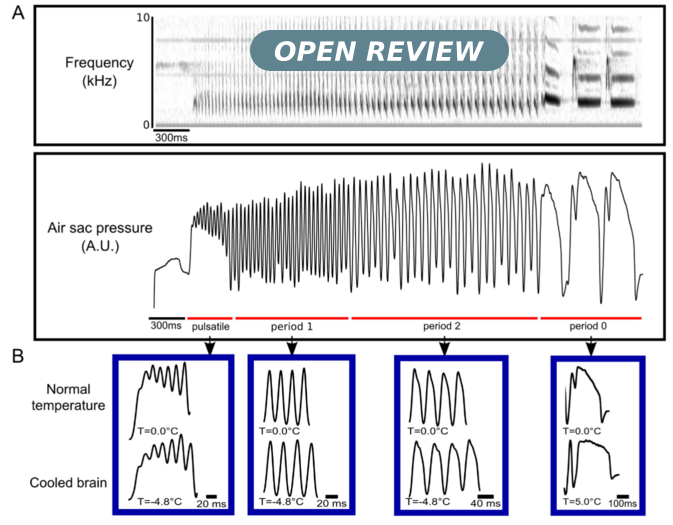Modeling temperature manipulations in a circular model of birdsong production
DOI:
https://doi.org/10.4279/pip.100002Keywords:
Dynamical systems, Cooling HVC, Syllable stretching, Motor controlAbstract
The nature of the neural mechanisms in the birdsong motor pathway that lead to the generation of respiratory patterns are a matter of extensive debate. In a top-down control paradigm, vocal gestures emerge from a unique timescale ruled by the telencephalic nucleus HVC, which engages other brain regions downstream. Another possibility is that the generation of motor instructions is distributed throughout the neural network, flowing both upstream and downstream. In this circular architecture, the song results from the integration of more than one timescale. In order to disambiguate these views, we used local focal cooling of HVC in canaries to manipulate the timescale present there. Within the frame of the circular model, we fitted the experimental pressure patterns of different types of syllables, which form a full song. We show that at least two separate timescales must be taken into account to reproduce them, one which is manipulated by cooling while the other remains unchanged. The modifications -stretching and breaking- of the syllables were quantitatively reproduced in this frame.
Received: 8 September 2017, Accepted: 7 December 2017; Edited by: A. Martí; Reviewed by: Y. S. Zhang, Princeton Neuroscience Institute, Princeton, NJ, USA.; DOI: http://dx.doi.org/10.4279/PIP.100002
Cite as: G C Dima, M A Goldin, G B Mindlin, Papers in Physics 10, 100002 (2018)
This paper, by G C Dima, M A Goldin, G B Mindlin, is licensed under the Creative Commons Attribution License 4.0.

Downloads
Published
How to Cite
Issue
Section
License
Authors agree to the PIP Copyleft Notice













